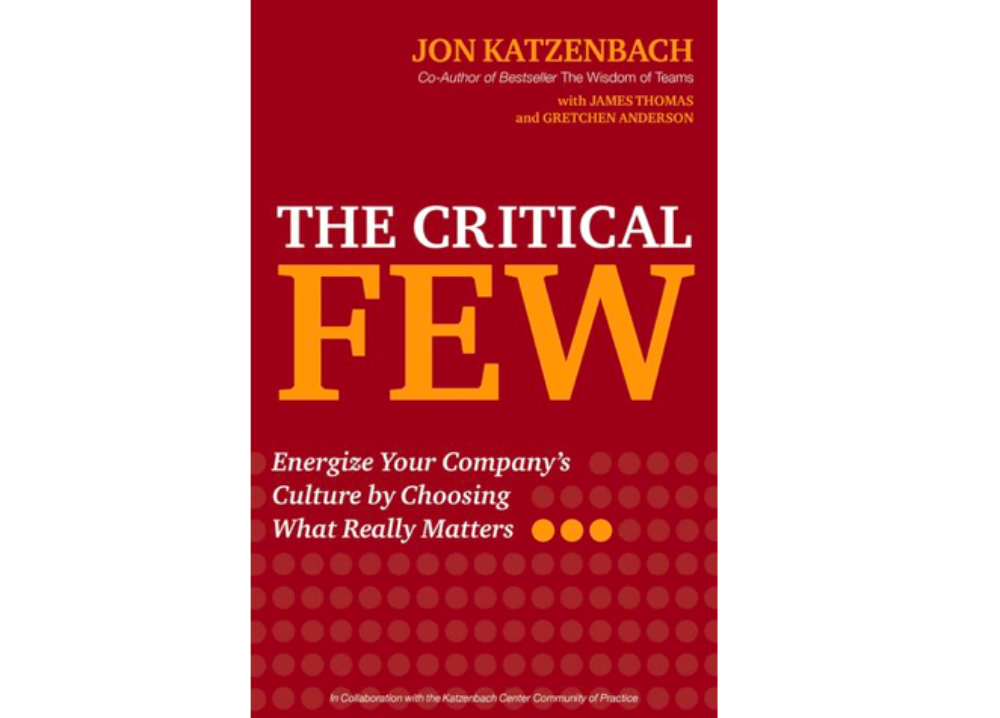
We’re living in a time in which it seems almost every corporation has articulated a commitment to transform. Much more than before, culture is understood to be integral to corporate transformation. The contrast between how the digital giants are understood to operate and the realities of most large corporates underscore the imperative to transform culture. CEOs extoll the need to be more agile, more innovative, move faster, work across boundaries, question previously sacred assumptions, disrupt ourselves.
The soaring language of cultural transformation outpaces the reality of operations. This dissonance breeds cynicism. Lofty aspirations easily get heard as corporate-speak. When it is often so difficult simply to know how to do one’s job with grace, messages about “how we should be” fail the test of providing a tangibly better way to fight today’s battle. Words get tuned out, programs get discarded, and a protective shell grows that any future efforts must pierce through.
For the ten years I was proud to call Jon Katzenbach a partner, and the ten years since of relentless focus on battle testing of his best ideas, “Katz” has fought to cut through that cycle of lofty words and missed expectations. His latest book, The Critical Few, written with James Thomas and Katzenbach alumna Gretchen Anderson, provides a simple, practical guide that leaders and those who help them navigate the waters of culture can use as their playbook.
To distill the essence of their advice, Katz and his team teach:
- Meet people where they are. Understand the core traits that represent the essence of what the company is like, and harness the positive elements of those traits to support the change that’s needed.
- Find a few behaviors that really matter – both by themselves and through the cascading effects they have on other behaviors – and focus intensely there.
- Seed change from within, rather than from above. Draw on those leaders who have already earned moral authority in the informal organization through building relationships and doing the right things. These “authentic informal leaders” have already solved the problem of credibility, and they can give other leaders the advice they need about how to make change count and make change stick.
- Build reinforcing loops: both inside each individual where adopting a keystone behavior can unlock others, and in the fabric of the organization, where network effects spread the critical behaviors and early results turn an accelerating wheel of action and momentum.
In this context, the “critical few” stands for multiple meanings: the critical few traits that changemakers must honor and build upon, the critical few behaviors to focus upon, the critical few informal leaders that form a nucleus, and the critical few metrics and markers that demonstrate that “we’re making a difference” and inspire further commitment.
The power a keystone behavior can have is difficult to overstate. At Katzenbach Partners, for instance, we grappled with the naturally high rates of attrition that came with a young, multi-disciplinary talent base recruited for having diverse interests. As I describe in depth in this post, we adopted a keystone behavior that we called the retention tree. Every time a team member left, we committed to reporting on the answers to three questions: (1) did we have an open dialogue well before the team member faced a decision point on any outside opportunity?; (2) did we come up with the best value proposition inside the firm we could?; (3) did we then keep all the commitments we made? If yes to all three questions, the departure was green; if no to any of the three questions, red. We reported twice a year to the full firm on all the departures and what “color” they were.
The commitment to report “colors” represented a keystone behavior because of all the other behaviors it led to. To name several effects:
- Each time a team member came to anyone at the firm to share their thinking about career aspirations that might take them beyond the firm, the three questions framed the imperative to support the person in their own terms
- Because the question of “best value proposition” was a firm question rather than just a question for the person sought out for advice, there was a strong norm of getting individual interests out on the table and multiple people engaged
- We all recognized the importance in this system of having team members come to us very early, and saw that the best way to do that was to be proactively helpful on the outside as well as the inside. The firm got very good at the playbook of helping junior team members build their external networks to have high-quality conversations to explore their interests
- Team members who left or who were considering leaving of course then spoke positively of their experience, which became a point of pride for others about what the firm was like, strengthening loyalty of others who weren’t particularly considering a move
- When people did leave, departures were celebrated. This was easy to do because almost always there had been a long, open dialogue before an eventual decision point was ever reached. We developed a whole genre of goodbye letters, and each departing team member would strive to outdo others in terms of the creativity with which they’d express what they remembered and what their Katzenbach experience had meant
I recently wrote about the moving experience of reconnecting with more than a hundred alumni – perhaps a third of everyone who had at any point worked at the firm -- at a self-organized, crowdfunded reunion of firm members, ten years after the formal end of Katzenbach Partners. In explaining why someone who worked at Katzenbach Partners for two years out of undergraduate fifteen years ago would take Friday off from work and pay out of pocket to fly from San Francisco to New York to spend the weekend reconnecting with old colleagues, these experiences of having the whole firm community support individuals’ aspirations, even when those aspirations pointed beyond the firm, have great power.
When we sold Katzenbach Partners to Booz & Company, we gained a much larger stage on which to develop our ideas about culture and influence corporate practice. Our first major client in the new context was General Motors, and Katz and his team bring to life in The Critical Few the learnings from that pivotal work, which represents a highlight in both his career and mine. At the same time, two of us from Katzenbach Partners – Traci Entel, now one of the top HR executives at BlackRock, and I – and two Booz Partners, David Knott and Richard Rawlinson, began work on the evolution of Booz’s own culture. While that work had many facets, a particular keystone behavior stands out, which we called Project Closed Loop. This represented the simple ritual of each client-facing team having a conversation at the beginning of a new client project regarding what the work should accomplish for the client, the firm, and each of the team members; how the team would work together, in a way that would both achieve the goal and reflect the needs and working styles of the team members; and how this dialogue would be kept alive through the project. The “closed loop” would then be fulfilled by the team having a conversation at the end of the project in which they’d revisit their notes from the conversation at project inception, assess how well they achieved their goals, and reflect on the experience. Simply knowing that there would be a conversation at the project’s end created a powerful mechanism for teams to shift all sorts of behaviors – for instance, relating to work-life balance and the participation of junior colleagues in building client relationships – that cumulatively had a significant and relatively swift impact on the firm’s broader culture.
I offer these personal reflections simply to illustrate what I have found to be the surprising power of some of the core elements of the approach to culture that Katz and his team lay out, both conceptually and tactically, in The Critical Few. I’ve had the great gift of a decade of working hand in hand with Katz, as well as of many conversations in the years since regarding what he and I have each continued to learn from our work. For those who have worked with him, Katz’s voice in the dialogues with “Alex,” a fictional composite of CEOs Katz has advised over the years, will immediately convey his presence. For those not lucky enough to know Katz, this narrative element of the book represents the next best thing to having him as a mentor and a teacher. The book is a pleasure to read. It is hard to imagine who would come away from the few hours required to make the short, enjoyable journey from cover to cover not feeling that they’ve learned far out of proportion to the effort the book requires.



